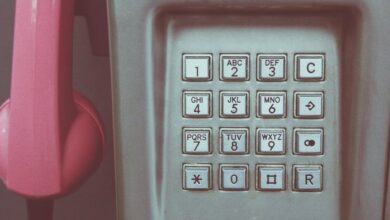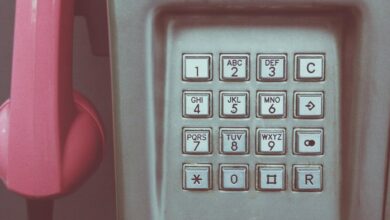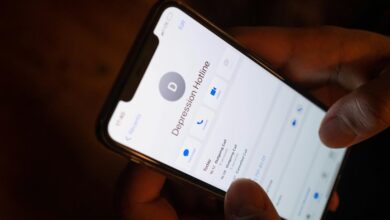Possible Scam Number Check: 3666538008, 3711080579, 3715490833, 3716485983, 3716618567, 3716706530

The numbers 3666538008, 3711080579, 3715490833, 3716485983, 3716618567, and 3716706530 have raised concerns regarding potential scam activities. Many individuals have reported suspicious interactions with these numbers. Analyzing patterns in scams can provide insights into their legitimacy. Exploring user experiences and utilizing lookup tools might reveal more. However, the question remains: how can one effectively discern the truth behind these calls?
Understanding Phone Scams
Although phone scams have existed for decades, their methods and technologies continue to evolve, making them increasingly sophisticated.
Effective scam prevention requires an understanding of these developments. For instance, scammers often manipulate caller ID to appear legitimate, deceiving unsuspecting individuals.
Awareness of these tactics is crucial for maintaining personal freedom and security, empowering individuals to recognize and report fraudulent communications effectively.
Identifying Suspicious Numbers
Identifying suspicious numbers requires a keen awareness of common scam indicators, such as unusual prefixes or unsolicited calls.
Researching unknown numbers through various online resources can provide valuable context and help determine legitimacy.
Additionally, reporting suspicious activity contributes to broader efforts to combat phone scams and protect potential victims.
Common Scam Indicators
As individuals navigate the complexities of communication in the digital age, recognizing common scam indicators becomes essential for safeguarding personal information.
Key elements include understanding scam psychology and identifying questionable telephone tactics, such as urgent requests for personal data or unfamiliar caller IDs.
Awareness of these signs empowers individuals to discern legitimate calls from potential threats, fostering a proactive approach to security.
Researching Unknown Numbers
Investigating unknown numbers is a crucial step in determining their legitimacy and potential risk.
Number research can reveal patterns associated with suspicious unknown callers, such as frequent reports of scams or unsolicited contact.
Utilizing online databases, reverse lookup services, and community forums enhances the ability to assess these numbers effectively, empowering individuals to make informed decisions about responding to unknown contacts.
Reporting Suspicious Activity
Many individuals encounter suspicious numbers that warrant immediate attention and reporting.
Recognizing these numbers is crucial for scam awareness, particularly as they often exhibit suspicious patterns, such as repetitive calls or unsolicited messages.
Reporting such activity to relevant authorities helps protect others from potential fraud.
Individuals are encouraged to document instances and share information, fostering a community vigilant against emerging scams.
How to Verify Phone Numbers
Verifying phone numbers is a crucial step in identifying potential scams or fraudulent activity. Effective phone verification includes various techniques, such as number tracing and cross-referencing databases. Below is a concise overview of verification methods:
| Method | Description | Tools |
|---|---|---|
| Online Search | Check for reported scams | Search engines |
| Reverse Lookup | Identify owner details | Lookup services |
| Social Media Check | Verify association with contacts | Social platforms |
| Report Search | Access scam databases | Scam reporting sites |
| Community Alerts | Engage local warnings | Community forums |
Common Scam Tactics
Identifying potential scams extends beyond phone number verification to understanding common tactics employed by fraudsters.
Awareness of scam psychology and social engineering is crucial. Key tactics include:
- Urgency to provoke quick responses.
- Emotional manipulation to elicit sympathy.
- Authority claims to instill fear.
- Promises of rewards to entice gullibility.
Recognizing these strategies enhances one’s ability to avoid falling victim to scams.
What to Do If You Receive a Scam Call
Receiving a scam call can be a bewildering experience that may provoke anxiety or confusion. Individuals are advised to block unwanted calls immediately to prevent future disturbances.
Additionally, managing call settings can enhance privacy and security. Utilizing features such as call screening or do-not-disturb modes empowers users to take control, ultimately fostering a sense of freedom in communication choices.
Reporting Scam Numbers
Reporting scam numbers is essential for mitigating fraudulent activities and protecting individuals from potential harm.
Identifying key indicators of scams, understanding the reporting procedures, and safeguarding personal information are critical components of this process.
A systematic approach to reporting not only aids in personal security but also contributes to broader community awareness and prevention efforts.
Recognizing Scam Indicators
Numerous indicators can signal potential scam phone numbers, making it essential for individuals to recognize these warning signs.
Understanding scam psychology and common caller traits can aid in this detection. Key indicators include:
- Unsolicited calls
- High-pressure tactics
- Requests for personal information
- Caller ID discrepancies
Recognizing these traits promotes awareness and empowers individuals to protect their freedom against deceptive practices.
Reporting Procedures Explained
How can individuals effectively report suspicious phone numbers to mitigate the risks associated with scams? Utilizing established reporting mechanisms is crucial for protecting oneself and others. This process may involve notifying local authorities, consumer protection agencies, or telecommunications providers, while considering the legal implications of such actions.
| Reporting Mechanism | Description |
|---|---|
| Local Authorities | Report to law enforcement |
| FTC (Federal Trade Commission) | File a complaint online |
| State Consumer Protection | Notify state agencies |
| Phone Carrier | Block and report the number |
| Online Platforms | Alert community forums |
Protecting Personal Information
Protecting personal information is a vital component in combating the risks associated with scam phone numbers.
To enhance data privacy and mitigate identity theft, individuals should:
- Report suspicious numbers to authorities.
- Utilize call-blocking applications.
- Educate themselves on common scams.
- Regularly monitor financial accounts.
Adopting these practices empowers individuals to safeguard their information and maintain control over their personal data.
Conclusion
In conclusion, conducting diligent due diligence on dubious digits like 3666538008 and its counterparts is critical. By leveraging lookup tools and sharing stories, savvy consumers can shield themselves from scams. Staying skeptical and aware of common con tactics fosters a culture of caution and collaboration. Ultimately, proactive reporting and sharing of suspicious numbers can significantly safeguard society from the persistent plague of phone fraud. Engaging in these efforts not only protects individuals but also fortifies the community against deceit.




